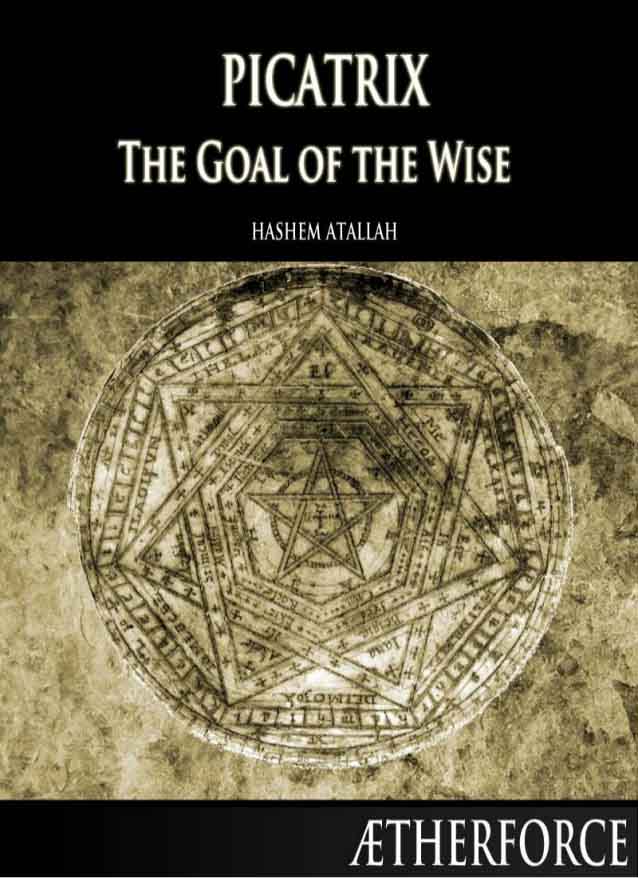
The Ghayat al-Hakim, “The Goal of the Wise,” was originally written in Arabic around the year 1000 C.E. and made famous throughout Europe by its Latin translation titled Picatrix. The importance of the text is paramount to those who would inquire into the true roots of not only modern occultism of the European lineage, but even of Western mysticism (and hence also theology) as a whole —if the esoteric roots of propagandistic exotericism are sought. While most English editions are based on the different Latin texts, there is an edition presumably translated directly from the original Arabic by Hashem Atallah and edited by William Kiesel. This latter is precisely the edition to which we will be making reference in this brief, amateur reccount of what is presented in the first chapter of Book I.
The first chapter of the Ghayat al-Hakim is an essay dealing concisely and to the point with the subject of knowledge originating in wisdom. All wisdom starts by recognizing the One Being, from whom everything else takes their “truth” and their properties, yet It is not limited by any set of properties nor does It derive Its truth from anywhere else. Wisdom appears to be directly granted by Allah, and which particular conception of wisdom appears to be defined as an insight into the abstract workings of reality. From wisdom stems the ability to obtain knowledge through different kinds of disciplines, also referred to as “arts of wisdom.” The essay ends by stating how philosophers, those seeking knowledge, develop themes with subjects and predicates, and by the use of informational statements that are either true or false.
Of the One Being it is said not only that everything else derives essence, reality and identity from It, as in the emanations that later Jewish and Christian mystics would derive, but also that It is “all-knowing” of these things. More precisely, the One Being is all-knowing of the different ranks of all beings. That there are those who come first and who themselves have no cause, have effects under them. That there are those in the middle who have causes and effects. And finally, that there are the last, who are the end of the chain, having causes but no effects. Interestingly, it is said that these ranks are not fixed, but that the last in this hierarchy of beings may ascend until they reach the first. The ranks serve the mechanics of emanation, by the first being able to understand how order is imparted, and then this understanding moving downwards until all of manifestation accepts it.
Of wisdom it is said that it has three subjective characteristics. The first is that it “grows and never vanishes.” The second that “it chastises and disciplines.” And lastly, that “it will not approach anyone who is not interested in it.” Simple words, and mayhaps a bit quaint, but they are as an open book to read for those who want to gain a basic yet heartfelt understanding of how to start to think about things. To seek wisdom, “is an obligation, as well as a virtue.” From here, knowledge only comes as a conclusion from work inspired or motivated by wisdom, which is itself obtained only as grace from the Allah, to whom all things are subject. We can therefore extrapolate that it is inspiration as fuel of the will comes from an holistic awareness of a reality in which we are contained, and into which we only gain insight by the adoption of a higher view, and an openess to the numinous. That it is clearly stated that Allah is also able to visit ruin upon any one It wishes, is quite clearly the sinisterly in this un-stated, and only apparent dichotomy.
“I have only created djinn and men so that they may serve me.”
“And not I have created the djinn and the mankind except that they worship Me.”
—Sura 51, verse 56
Knowledge is consequently obtained through the previously mentioned arts of wisdom. These arts are said to be religious, natural, theological or logical and analytical. The arts are obviously philosophical in character, but they are not only different lines of inquiry, but rather different “methods.” The religious art includes not only “revelation” (what can be glimpsed from scripture), but the practice of asceticism, and the study of jurisprudence, and hence of proper human behavior, relations and ethics. The natural art includes observations of the celestial (astronomy and astrology?), the world and the universe. The latter classification revealingly includes the study of evil as part of the natural art. It is interesting that what is here called the theological art is not confounded, as the Christians do to this day, with philosophy proper itself, and is rather abscribed to the “knowledge of the self and Creator”—perhaps what we today would consider Jungian psychology. Finally, and apparently as a fourth level of concrete understanding, comes the logical and the analytical, through which clear and unequivocal statements and derivations are made in the development of ideas.
Thus comes to an end the first chapter of Book I of the Ghayat al-Hakim, The Goal of the Wise.
23 CommentsTags: arabic, book 1 chapter 1, ghayat al-hakim, picatrix

